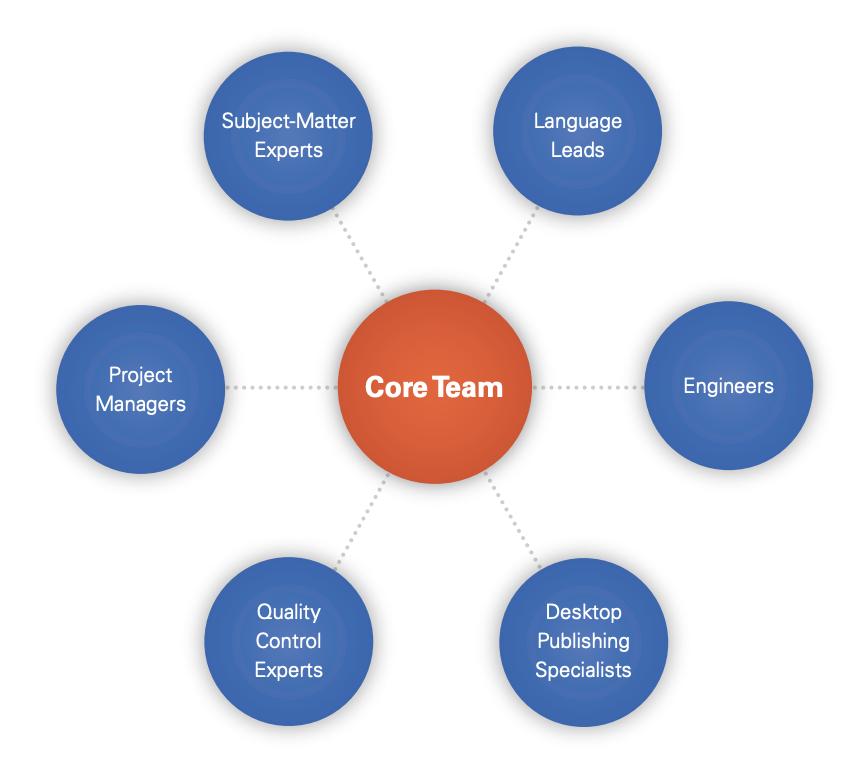This project required close collaboration at every stage due to the complexity of the files. ULG’s Core Team instituted a solution that worked seamlessly from the translation, formatting and engineering perspective.
The Core Team is comprised of in-house experts including language leads, engineers, desktop publishing specialists and quality control experts, as well as project management and subject-matter experts. The team conducted extensive scoping of the training modules before initiating any work.
This scoping phase helped uncover the original content platform used for the English training modules and allowed the translation process to begin while engineers assessed the module structure simultaneously. Creating these efficiencies saved valuable time—and costs—in the overall project.

As part of the standard ULG process, comprehensive internal documentation was created, including:
- Linguistic guidelines to ensure consistency across of all units of measurement, punctuation and acronyms
- Specific job instructions detailing each step in the process, providing information about reference materials, and pointing to the guidelines and checklists to be used at every step
- A troubleshooting section aimed at the engineers, translators and project managers that contained a summary of the issues and challenges identified within the files at the scoping stage, along with a solution or workaround for each of them
After successfully translating the 70 forms, ULG’s desktop publishing specialists converted the translated documents back into screenshots that matched those used in the source training modules—including handwritten notes.
Translation of the forms ran concurrently with the desktop publishing specialists’ compilation of suitable digital script-type fonts that could be used as replacements for the physically handwritten notes.



